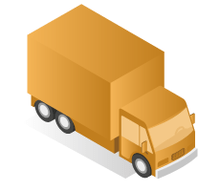Moving Out Checklist Australia 2025 | Free Printable PDF
Find the link below to download and print our moving house checklist and read on for more tips and tricks for your move. Whether you’re planning your move week-by-week or finalizing your moving out checklist, our guide will help you organize your relocation with ease. Figure out who to notify when moving and learn how to change your address when moving house.
Moving House? Compare Plans & Sign Up Today with Selectra:
✍ Print Your FREE Moving House Checklist Here:Download our Printable FREE PDF Moving House Checklist to keep your move in order!
Download PDF
Printable Moving House Checklist PDF Download
Above, you will find our printable moving house checklist.
This checklist for moving house is designed for Australians and includes:
- A moving house checklist with important tasks to remember, such as notifying Australian Post.
- An itemized checklist for packing & for purchasing important items for your new home.
- A guided timeline for completing tasks related to moving house (with checkboxes for each task).
- A notes page for any extra notes you may have, including phone numbers, company names, etc.
Why Use a Moving Out Checklist in Australia?
A detailed moving out checklist is essential to keep track of multiple tasks and deadlines when relocating anywhere in Australia. It helps break down the overwhelming process of moving house into manageable steps, ensuring nothing is forgotten. By following a comprehensive checklist, renters and homeowners can stay organized, reduce stress, and avoid costly last-minute problems. Whether you are using professional removalists or moving yourself, an effective checklist provides reminders for important actions such as notifying services, packing, and updating your address.
Backyard Essentials After Moving House Australia
Once you’ve settled into your new home, don’t forget to consider your outdoor space, especially if you have children or enjoy spending time outside. Setting up your backyard can help turn a new house into a true home.
Explore quality outdoor play equipment and backyard solutions at The Best Backyard to help you make the most of your new outdoor space.
Moving Out Checklist Australia- What to Pack
Packing is widely considered the worst part of moving house, but with smart strategies and early planning, you can streamline the process.
It may seem easier to throw everything into boxes and hope for the best, but packing smart and starting early can make the entire moving process easier. This is especially true if you will be moving yourself without the assistance of a removalist company.
Below we will go over some smart packing tips for moving house and also packing tools you will need and where to find them. With these tips and the right equipment, you'll be well-prepared to tackle your move efficiently. Follow these moving out checklist tips to pack efficiently—even if you’re moving without a removalist.
Printable Moving House Checklist PDF Download
For Australians planning a move, having a printable moving house checklist in PDF format allows for easy tracking and ticking off tasks on the go. Our free checklist covers vital areas including packing, notifying Australian Post for mail redirection, booking services, and updating your details with utility providers. Featuring an itemized packing list, a convenient timeline for completing tasks week-by-week, and a notes page for personal reminders, this print-ready guide is designed to make your move efficient and less stressful.
Moving Out Checklist Australia Packing Tips and Tricks

- Label Your Boxes
- Separate Essential Items
- Copy Important Documents
- Prioritize Off-season Clothing
- Distribute Heavy Items
Label Each Box Clearly:
Remember to clearly label your moving boxes with the contents and room. This step is a vital part of your moving house checklist.
This will help the movers know where the boxes need to be placed and will make it more convenient for you to unpack after the removalists leave. Also, consider drawing arrows for which end of the box is right-side up. It's a good idea to include a general overview of the contents as well, so you can prioritize unboxing.
If you're a visual person you can try to use color-coded tape to organize your boxes. If you are more analytical, you could even create a spreadsheet with numbered boxes and an itemized list of what is in each box so you know where they go.
Separate Essential Items:
Keep your essential items separate from other items when moving house. Include this in your moving out checklist to ensure nothing essential is left behind.
This will allow you to quickly unpack after the move and return to your daily life sooner. It's also a good idea to make sure that you keep essential personal items (toiletries and a change of clothes) separate so that the removalists don't take them in their van when moving house, that way you can have them immediately if any problems may occur with your moving delivery.
Make Copies of Important Documents:
When moving house, it's important to take special care of all your important documents such as passports, bank information, deeds to the house etc. This precaution is part of a smart moving house checklist.
Keep these items separate so that the removalists don't take them by accident. If you do decide to send your documents with the removalists when moving house, back up all digital documents or make photocopies in case they are misplaced or destroyed by accident.
Prioritize Off-season Clothes & Decorations:
Pack your off-season clothing and home decorations first as these items will not likely be needed immediately after moving house.
You can also use your seasonal clothes to protect fragile items and decorations when packing up to move.
Distribute Heavy Items:
Take care not to load many heavy items into large boxes when moving house.
If you are moving by yourself, distributing heavier items across smaller boxes will make moving house easier. If you're moving house with a removalist company, your removalists will thank you. You will also be rest assured that boxes won't break when being carried.

New House? – Get set up now!
Set up utilities at your new home in just one click!
What Packing Items Do I Need for Moving House Australia?
- Below we have created a list of the main packing items you may need to buy when moving house:
- Boxes
- Bubble Wrap or Newsprint
- Packing Tape
- A Trolley
Boxes:
Of course, you will need boxes when moving.
Surprisingly, boxes can be quite expensive to purchase. However, you can find boxes for free or secondhand. Some common places to find free boxes for moving house include:

- Online
- From friends & family
- Local shops & stores
Don't worry about finding boxes that are all the same size. It can be a good idea to get different sized boxes as you never know what may come in handy.
Ask around to local shops that sell heavy items such as food and alcohol, as they tend to have many unused boxes and they are usually quite strong.
Bubble Wrap & Newsprint:
It's best practice to use bubble wrap and newspaper to protect your fragile things when moving house but if you want to save time and space there are other things you can use.
Clothing and other soft materials can be used used to wrap fragile items to keep them from breaking. Other household items to use when packing include:
- Clothing
- Towels
- Old rags
- Socks
- Paper towels
Packing Tape:
Packing tape is essential when moving house to ensure that your boxes are strong and outlast the move.
Especially for heavy boxes, a single strip of packing tape won't be enough. Make sure to tape up your boxes in the form of a plus sign [+] to prevent a disaster later. You can download our moving house checklist PDF to help with moving out in Australia.
A Trolley:
Consider renting or borrowing a moving trolley for transporting heavier items.
This will help you considerably if you are moving yourself. If you are moving house with a removalist company, most removalists have trolleys on hand.
Checklist for Moving House: Timeline
Now that you're prepped to move with boxes and packing materials, let's go through our moving house checklist!
In this section, we break down the process of moving house into a manageable timeline to help you stay organized. It may sound crazy, but starting your move 6-8 weeks before your actual moving day can keep your stress low and make the entire moving process cheaper, easier, and less of a hassle. This is especially true if you are moving yourself. Read on to learn how to schedule your move. Don't forget to donwload our moving out checklist Australia for the best tips.
5-6 Weeks Before Moving House
Clean & Purge:
The best thing you can do to help yourself stay sane during the process of moving house is to get rid of what you don’t need. Go through each room and categorize items to sell, donate, or throw out. Eliminating unnecessary items not only lightens your load but also simplifies your moving out checklist.
The more you eliminate, the less you need to pack. This will help you considerably if you are moving yourself, and will also save you money if you are moving house with a removalist.
Go through each room, and organize the things into the following categories:
- Sell
- Donate
- Throw out
If you are a fan of the organization guru Marie Kondo (on Netflix), you will know exactly what we mean. Keep only the items that "spark joy" and eliminate the rest. Aside from needing to pack less, you will feel better about moving and may also earn some cash for your old things.
3-4 Weeks Before Moving House
Organize:
If you want to find a removalist to help you move, get at least three quotes from reputable removal companies. Do your research online, and ask friends and family for their referrals.
You might also want to request an in-home estimate if you live in a larger house to get a more accurate quote. Moving during the week can be cheaper than moving on the weekends so consider whether should ask for time off work. It might be more economic to take a few days off work for your move, rather than try and get everything done over the weekend.
If you plan on moving yourself, you should consider looking into the DIY moving options. Look into rental van services or a storage pod and coordinate with friends and family who will help you during your move. Don't forget to request any childcare or pet care you may need well in advance.
Include scheduling in your moving out checklist to ensure a smooth move. Make an email with the dates, times, addresses, and anything else friends & family might need to know in order to help you move. And don’t forget to bring snacks, drinks, and gratitude for all the help!
Remember to take time to request any holiday you may need off from work as soon as possible to avoid schedule conflicts.
2-3 Weeks Before Moving House
Begin Packing:
Begin packing items that are already being stored and that will not be used immediately after moving house.
The first items to pack when moving house include:
- Decorations
- Seasonal clothing
- Things in storage
- Unused items in your garage or shed
Unless you are moving yourself, it's also a good idea to pack away any valuables you would like to keep safe when moving house. Make sure you are labelling your boxes as you go. This will help you to easily unpack once you have finished moving house.

You should also begin contacting your internet service provider and energy retailer to either organize your relocation or sign up for a new connection with a new company.
If you have questions on how to compare providers or plans, feel free to call our helpline for help to switch your accounts over.
Check to see if you’ll need to pay any broken-contract fees, compare energy providers, TV services and internet providers in your new area, and see whether it’s better to stick with your current plan or switch to something new.

New House? – Get set up now!
Set up utilities at your new home in just one click!
1-2 Weeks Before Moving House
The Final Countdown:
It's ideal to finish packing 1 week before moving house.
If you have followed the steps in our moving house checklist, at this point you will have most things taken care of. Now is the time to take care of any loose ends.
if you haven't already done so, now is the time to dispose of any items that will not be moving house with you. If you are moving yourself, go over all the details of the moving house checklist again and make sure everything is in order. If you have hired a removalist, contact them to check everything is ready for the scheduled day of your move.
The Day Before Moving House Checklist
It might seem impossible to sleep before moving day, but doing a little more the night before moving house can make your moving day seem like a breeze.
Make sure everything you don’t immediately need is already packed: Whether you are moving yourself or using a removalist, check that your boxes are clearly labelled. This includes washing and packing up any final dishes and boxing up dirty clothes.
Clean & Defrost the fridge & freezer: If you are a renter and leaving your property, this may not be necessary, but if you are moving house and bringing your appliances with you, make sure not to forget about this step.
Pack immediate necessities in a separate bag: This includes a change of clothes, toiletries and towels, chargers and bedsheets. Packing these items separately can make it easier to get settled your first night in your new home.
Do a sweep: You’ll probably be doing lots of “final sweeps” but no one has ever double-checked too often. Make sure you’re not forgetting anything in frequently-forgotten drawers or on shelves, and check your washing machine and dishwasher to make sure nothing was left behind.
Sleep early: Early to bed, early to rise, and the earlier your wake up on the day of moving house, the less rushed you’ll feel. A good night’s sleep will do wonders to make the day of your move as stress-free as possible.
Day-of Moving Out Checklist Australia

Visit our Moving Out Checklist for everything you need to know the day of your move.
It’s moving day! If you’ve stayed organized up until now, this day should go off without much of a hitch.
Wake up early: No matter how prepared you think you are, there will always be more to do when it comes to the day of your move. Going to bed early, and waking up early, will help you feel less rushed the next day regardless of if you are moving yourself or using a removalist.
Pack any remaining last-minute items (again): The final items you need are probably the first things you’ll want in your new home. If you didn't heed our moving house checklist advice from the day before, then pack your items now. If you carry a purse or bag, keep some snacks, valuable documents, and essential electronics like phones, here for easy access.
Meet & help the removalists: Help your movers by telling them how you want things packed in the truck (furniture towards the back, for example, or certain boxes set aside). Sticking around while the removalists load everything up can also give you peace of mind when you see how everything in the truck is loaded.
Do (another) final check: Look under the counters, behind the washing machine, and in difficult-to-see places to make sure there isn’t something hiding you might easily miss. If you have food leftover after defrosting and cleaning the fridge the day before, throw it out or pack it up with you.
Help the removalists at your new address: If you are moving yourself, then you may wish to wait for the next day to unpack. If you are using a removalist, then meet them at your new house and make sure to let them know which room your boxes should go in.
Unpack only what you need. These essentials will probably include everything you packed up this morning such as a toothbrush, bedsheets, pajamas, and things to shower.
Give yourself a break and wait till the next day to unpack your things. At this point, you'll likely be exhausted from moving house all day.
Time to relax: Order takeout and open a bottle of your favorite drink, or go explore your new neighborhood and get a bite to eat at a local restaurant. It’s been a long day, and there’s more to unpack later but for now, it’s time to enjoy your new home.
Timeline for Preparing Your Move
Starting your moving preparations 6 to 8 weeks before your moving day helps reduce stress and spread out tasks evenly. Early actions include cleaning and purging unwanted items, sourcing packing materials, and requesting quotes from removalists. Around 3 to 4 weeks out, focus on packing non-essential belongings and scheduling utility disconnections and reconnections. One week before the move should involve completing packing, confirming arrangements, and preparing a survival bag with daily essentials. Tackling your move according to a timeline helps ensure nothing is overlooked.
Change of Address for Moving House Checklist PDF
For the full instructions on changing your address when moving house, visit our complete guide to changing your address. This guide will help you avoid missed bills, packages, or important notices. Additionally, you can request up to 12 months of mail redirection from Australia Post.
It’s important to remember to change your mailing address as soon as possible, to avoid lost bills, missed packages, or other issues. However, you can also request up to 12 months of mail redirection from the Australian post office, to give yourself a bit more time to make sure all your subscriptions, services, letters, and billing addresses are up to date.
Be sure to notify the following parties of your change of address:
- Insurance providers
- Post office
- Government departments
- Drivers license and vehicle registration
- Healthcare providers
- Banks and financial institutions
- Work and school
- Newspapers and subscription services
- Utilities
Moving Interstate- Moving out checklist Australia
Find a complete moving interstate checklist with our Moving Interstate Guide.
In reality, moving interstate shouldn’t be much different from the checklist for moving house above. When moving interstate:
- Decide what you want to keep and get rid of everything you don’t want
- Research and get quotes from reputable removalists
- Arrange time off work, childcare, and/or pet care
- Begin packing early, starting with nonessential things
- Remember to label clearly, and pack your moving boxes intelligently
- Make copies of important documents and keep important things with you during the move
- Change your address and sign up for AusPost mail redirection
- Get a good night’s sleep the night before you move, and wake up early
✍ Print Your FREE Moving House Checklist Here:Get the Printable FREE PDF Moving Home Checklist:
Download PDF
Moving House Made Easy with our Moving House Checklist PDF
In summary, our printable moving house checklist is designed to help you manage every aspect of your move—from planning and packing to updating your address and notifying service providers. With our detailed timeline and practical tips, you can make your move as stress-free as possible and ensure that nothing is overlooked.
Frequently Asked Questions
Where can I download the Moving House Checklist PDF?
Download your FREE PDF checklist using the link above to keep your moving house checklist and moving out checklist organized.
What are the essential items included in the moving out checklist Australia?
Our checklist includes tasks such as notifying Australia Post, packing tips, a timeline for your move, and space for additional notes.
How early should I start preparing my moving out checklist Australia?
It’s recommended to begin planning and creating your moving out checklist at least 6-8 weeks before your move to keep stress levels low.
What packing tips are included in the moving house checklist PDF?
Tips include labeling boxes, keeping essential items separate, copying important documents, and distributing heavy items across smaller boxes.
How do I ensure I update my address correctly when moving house?
Follow our detailed change of address checklist to notify all necessary parties and avoid missed bills or packages.
Click below to find a better deal for your home!


